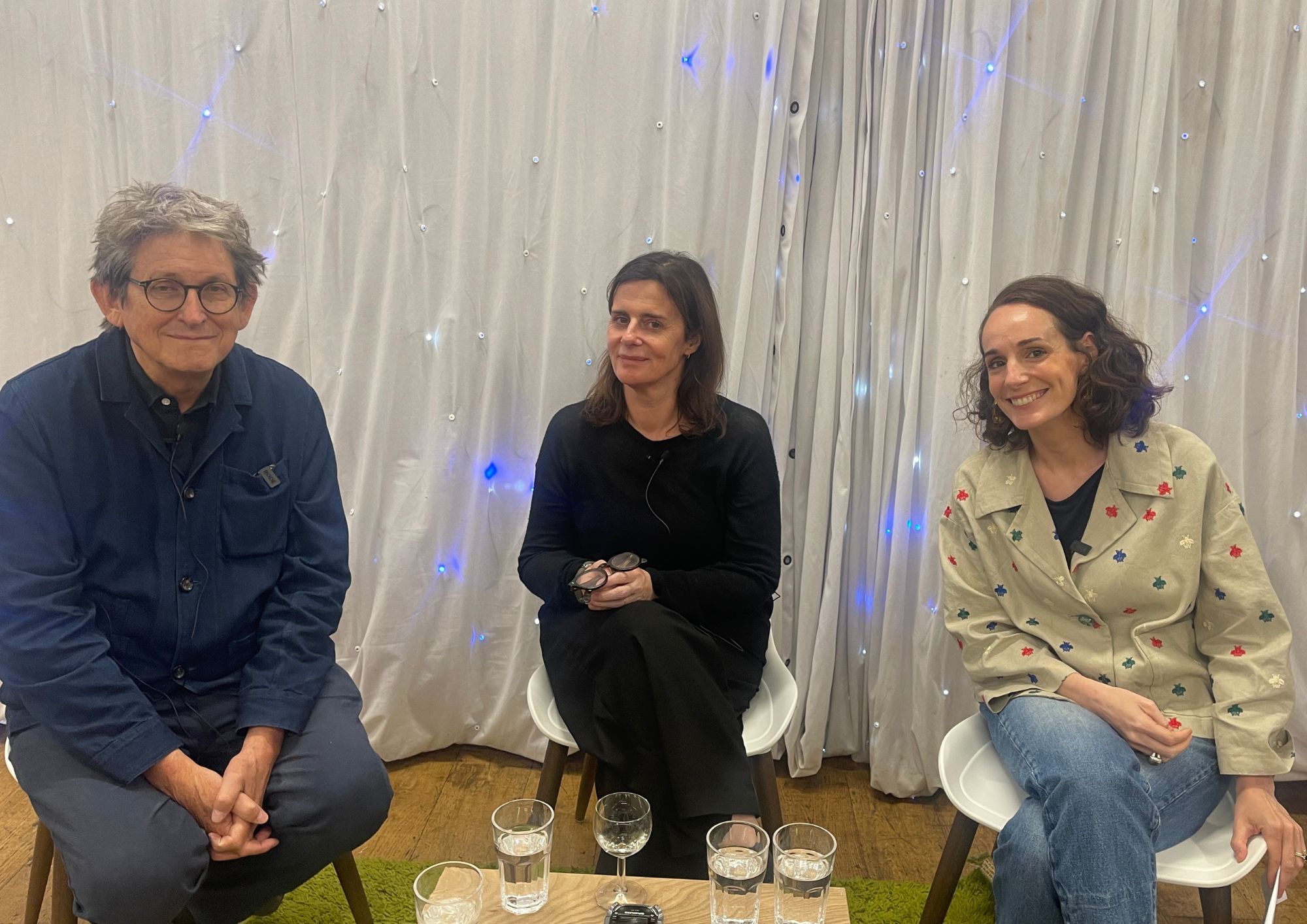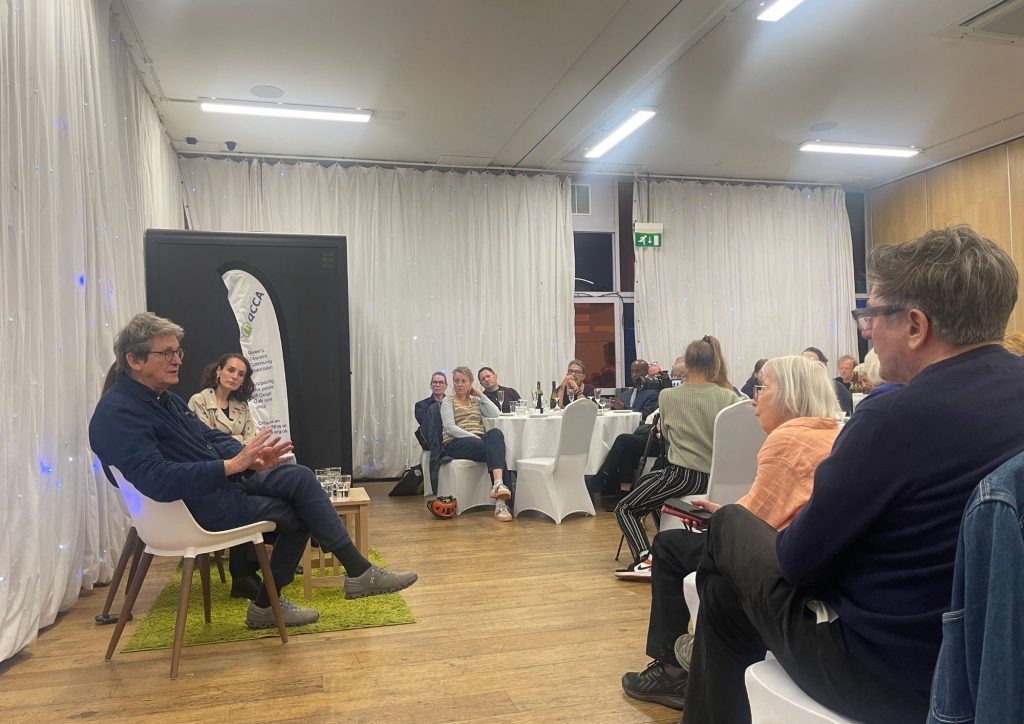‘Meet me in Hong Kong with a Rubik’s Cube': Behind the scenes of The Guardian's biggest scoop
Alan Rusbridger and Janine Gibson talk about data surveillance expose
Monday, 22nd September 2025 — By Frankie Lister-Fell

Alan Rusbridger, Janine Gibson and host Livia Paggi at QUeen’s Crescent Community Centre
GUINNESS, a Rubik’s Cube and wet towels by the door were some of the extra security measures used by The Guardian team in the lead-up to breaking the Edward Snowden story.
The behind-the-scenes details were revealed by former editor of the newspaper Alan Rusbridger and Janine Gibson, who was the editor of the US division at the time, on Tuesday evening.
They were speaking at a fundraiser for the Queen’s Crescent Community Association.
Mr Snowden was the former contractor for the CIA who exposed mass secret surveillance of the American population in 2013.
Ms Gibson told the event that when she first got a whiff of the “biggest security leak in a generation” through her colleague Glenn Greenwald, she was concerned the anonymous whistleblower was a “complete fantasist trying to bring down The Guardian”.
Mr Greenwald flew from his home in Rio to show Ms Gibson the files in New York.
She recalled: “We had to get an air gap computer, a computer that has never been on the internet, and get a really cheap laptop that was about £100 and sat there on a terrible Ikea sofa in my office as he opened up this PowerPoint presentation, but it was like a five-year-old had done it. There was a big pink triangle that said ‘collect all data against’.
“It was either the Hitler diaries [famous hoax] or it is indeed the biggest thing.”

Mr Rusbridger said they first needed to decide if it was worth flying to Hong Kong to meet the whistleblower – the Washington Post had previously decided not to.
They took the risk, and a team of four went out to meet Mr Snowden, who they identified in a hotel lobby because he was carrying an agreed object.
Ms Gibson said: “They had the secret signal of the Rubik’s Cube that he would be holding in this hotel in Hong Kong.
“Then when they met, they had to go to his room, and there were wet towels by the door and phones in the fridge, all sorts of paranoid measures.
“We had code words. I know it sounds ridiculous, but when you’re doing these things and you’re looking at the slides, they show you the capabilities of the people you’re up against.”
They learned how to use “disposable chat rooms” to communicate with each other.
If reporter Ewan McGregor, one of the three to meet Mr Snowden, thought the source was legitimate – based on things like if he had a CIA car park pass – he would tell Ms Gibson “the Guinness is good”.
Mr Rusbridger said the pressure of those initial days was intense.
Would he go to prison?
Would the CIA track down Mr Snowden, who had taken time off work for “epilepsy treatment”?
After the first story was published, their phones had suddenly started making mysterious clicking noises once they’d answered a call.
“I went through 42 phones that year,” Ms Gibson said.
Jeremy Hayward, the prime minister’s secretary, later turned up at The Guardian‘s office to “intimidate” them against publishing more, said Mr Rusbridger adding: “He began by saying ‘in that block of flats over the road Chinese spies will be there now. They will have a laser beam on your glass of water, which will turn it into a microphone, because they’ll measure the vibrations on top.’”
After the “goons from GCHQ” had gone, Mr Rusbridger said they were forced to destroy all their computers.
But not before he had shared all the documents with the New York Times, who continued to expose the mass gathering of private data.
Mr Snowden later moved to Russia.